In my years so far as a teacher for SmArt School, I’ve tried to coach my students into their most creative, authentic, confident, and sustainably-productive selves. In trying to put my best habits into words, I have found myself better able to practice and benefit from the mindset I try to impart. In not much of a particular order and each point relating to the others, here’s a list of things that help!
1. No one ever gets as much time as they thought they would
-
- The first assignment I give my students is to track their time. In a vertical column on a piece of paper (planner, notebook, sketchbook page, anything!) on the left, write the hours of the day. Next to the hour, write in your planned schedule. Blocks of time for self care like bathing and exercise, meals, chores; blocks of time for day job work; blocks of time for class work/personal work; blocks of time for leisure activities. Then, as the day goes on, write your actual time usage down the right side. Take a moment to laugh when they don’t match, that’s the point! Keep doing this for at least a couple of weeks. Remember the purpose of this not to judge yourself, but to find out how many hours you typically get to work in a day/week, and how long things actually take.
- For future projections, you can use your new, more accurate time-keeping to estimate schedules for yourself that are doable and that leave you room for adequate rest and relaxation. Look at the true total hours a project took you and double that when you schedule yourself. Where does one find this work time? Look at your real time use and identify the things that are taking much more time that you’d like, like phone use or gaming or laying in bed for an hour before moving in the morning. You need to remove something to make room for any new work time or healthy habits you want to add to your life. Then, however long you think a painting will take you, double that and slot the hours into your expected work time blocks. Doubling the amount of work time needed for a painting to your estimates will allow for those unexpected things like family emergencies, materials experiments, sometimes having to start over, etc. It’s like a financial budget – you establish your system so that when things go wrong, it saves your a**.
- You will do better work when you are not panicking due to deadline stress, and you will do a lot less damage to your body, mind, and relationships. Build the life you want to live each day, rather than focusing on how much work you want to finish.
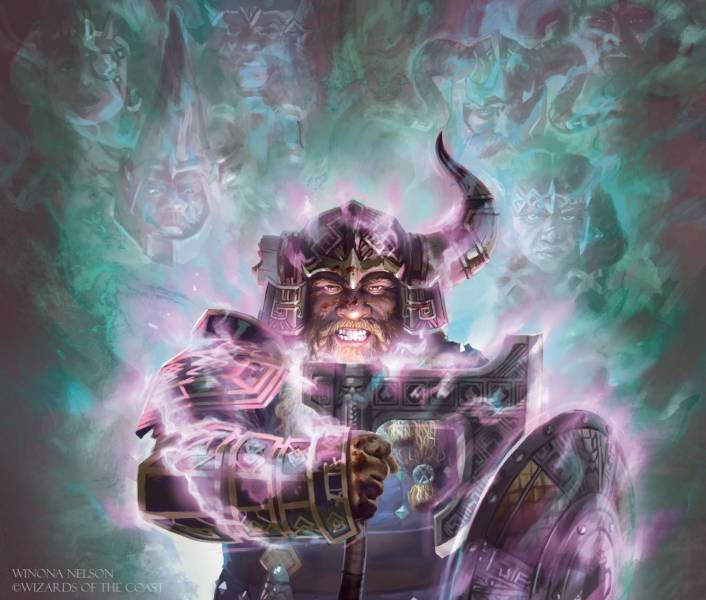
Art by Winona Nelson, for “The Legend of Drizzt: Gauntlgrym” by R. A. Salvatore, for Wizards of the Coast. Art directed by Kara Kenna. Digital.
2.Use Words
-
- Feelings are telling, and they do drive your decisions. Many artists are lured by the idea of following their gut, on letting instinct or vibes lead them. Maintaining a strong connection to emotion makes for captivating work that connects to the emotions of your viewers, something that is essential particularly in fine art. But until it is studied and harnessed, your changeable whims are not a reliable or predictable way to make decisions. Unchecked changes of mind often lead students further and further from their prompt. How do you unlock the real power of emotional connection? Use words! Having an emotional keyword for each image and making every decision throughout the execution using a process of asking whether it reinforces that emotional keyword, that’s what gives your work a unified and powerful mood.
- Words also help cement things in your memory while studying. Compare two different imaginary people’s mental approaches to timed figure drawing exercises: One goes in with the general thought of trying to get better at drawing the figure. The other one talks to themselves about what they’re seeing, asks questions and finds the answer (i.e “Where will I mark the top and bottom extent of the drawing I am about to do? And now, where is the midpoint of the figure in this pose?”) You may think the latter is what everyone is naturally doing while drawing, and to an extent that might be true, but until you fully form and say the questions in your head, you are looking for answers to questions you have not identified, which makes them impossible to answer. “Getting better at drawing the figure” is not a question, it’s just a scary cloud that tells you you’re not good enough.
- Writing a full sentence down is extremely helpful! “Is the figure in proportion?” might be a good one to start with – it leads to sub-questions you can then focus on and answer, like whether the legs are long enough, whether the head is too big. “Which areas are in light and which are in shadow?” is another great one, along with “What does the shadow shape resemble?”. These questions, over time, become easier and easier to answer for yourself until they become a simple visual-proofreading checklist item in your habitual process rather than your full purpose in the image. Then you can move on to sentences more tailored to the emotional narrative of your piece, something like “Does this pose convey the ‘Menace’ keyword I identified as my mood goal for the piece?”
3. One idea at a time
-
- This goes back to the keyword idea. If you have new ideas during the execution of an image, check back against the emotional keyword you have written down. If it does not strengthen the keyword, then thank your brain for the attempt, write the idea down for possible future use, and dismiss it from this piece. Adding anything that does not relate to the keyword simply muddies the emotional idea of the piece. New ideas are fun, and execution takes a long time, but that time invested will not get the successful finished painting you want if you don’t stay on target!
- I’ll put it another way: Go for the knockout hit! Look for the simple solution and put everything you’ve got into that one idea.

Art by Winona Nelson, for “The Legend of Drizzt: Charon’s Claw” by R. A. Salvatore, for Wizards of the Coast. Art directed by Kara Kenna. Digital.
4. Don’t worry too much about your voice or your “comfort zone”
-
- Voice is not something that needs much conscious direction. Unless you are trying to copy one other artist’s voice, it’s very difficult to hide your own. It’s the combination of your technical abilities and influences and interests and interpretation of the world. Voice is different from style, which does benefit from identifying elements of visual language you want to use or will leave out from the piece.
- I don’t like the term “comfort zone” as it implies that there’s something wrong with painting what you’re best at painting. Plus, it doesn’t make any sense–as you get better at things outside your “comfort zone” are you supposed to add those to the list of things it’s mysteriously cowardly for you to paint?! F*** that! I use the term “power zone” instead. As you continue to grow your abilities, you are expanding your power zone! While studies and experiments should remain a part of your growth, the most successful professional work comes from keeping one foot in your power zone. And when opportunities come along that are firmly in the center of your powers, you will be absolutely slaying it!
5. You cannot control anything but yourself
-
- You can work towards goals like working for a particular dream client, but there are many factors involved in commissioning that have nothing to do with the quality of your work. Maybe you sent your portfolio in after they had sent out all commissions for the quarter. Maybe that art director loves your sample but they have no upcoming books that are the right fit for your style. Don’t take it personally if work doesn’t flow in right away or your dream job eludes you again and again. Focus on what you can control, which is making the best work you can and sharing it publicly.
- You cannot control social media algorithms or some random piece relating to a meme going viral. You can try, but down that path lies madness. You also cannot control judges or awards. All you can do is–you guessed it–make good work and share it.
6. There’s no wrong answer but inaction
-
- There are thousands and thousands of products and projects and each one has different needs. Many are flexible about the style and open to the artist’s input. Finding your fulfillment as an artist is less about changing yourself to fit a current opportunity than it is to become as strong as you can so that you’re ready for when new opportunities find you. An idea or approach that won’t work for a current job might be perfect for one in the future. It’s a long game!
- There are endless ways to solve a problem in a piece. You learn foundations in order to have tools at your disposal. To gauge the usefulness of one of the many possible solutions to the problem you’re facing, refer to your keyword and ask yourself if there’s a way to solve the issue that reinforces the core emotion.
- Follow the logic. Once you’ve identified a problem using words, you can propose a possible solution. (“This composition feels stiff. Why does it feel stiff? What’s different from stiff? Swoopy, maybe?”) Once you’ve proposed the possible solution to yourself, ask what are the consequences, and the new opportunities, brought by that change. And again, do those consequences or opportunities reinforce the emotional keyword?
7. Having a system will save you
-
- Keep a running tab of “productive procrastination” tasks. If you really cannot get your work session started, permit yourself to do a task from the approved list and then try again. Some possible productive procrastination tasks: Chores and self-care (which keep you in good standing with the people who live with, care about you, or who otherwise have to smell you, and are good for your mental health), answering one email you’ve been meaning to get to, categorizing ten of your deductible purchases ahead of tax season, doing a session of yoga or stretching, adding three songs to a playlist of music that fits your project, fifteen minutes of collecting reference and inspiration images, doing one step of prepping a surface, ordering a frame well ahead of the show you need it for, calling your mother… Getting one little thing done when you can’t get your brain on task often gives you the positive momentum you needed—or, you might find that you suddenly would love to paint… when the alternative is cleaning the toilet.
- Having a checklist of painting-execution tasks can keep you moving when you might otherwise rather quit and start a new piece. Have you decided, for each inch of your piece, which edges will be sharp and which will be soft, and cleaned them all up appropriately? Have you shot the reference you need or are you just repainting the same area again and again for lack of information? Have you gone over each square inch to make sure your brushstrokes are not transparent and your value and temperature choices have been made and applied consciously? Visualize how great it will feel to call the piece finished, and dig in.
- Think of the tasks you’re dreading as gifts you can give your future self. Would they like to wake up tomorrow to the layers in the piece nice and clean, reference photos shot, and the dishes done? Hell yes they would. Not doing the grunt work now when you have a chance to do it is the same as saying “F*** you” to your future self. That’s your future self you’re talking to! Treat them like the queen/king/monarch you wish your past self had treated you as! If you need to picture your Future Self in leather, brandishing a riding crop, so that you can say “Yes mistress/zaddy/etc” and do their bidding, well, I’m not going to judge you.
- No elephant is too big to eat. Build and trust your system.
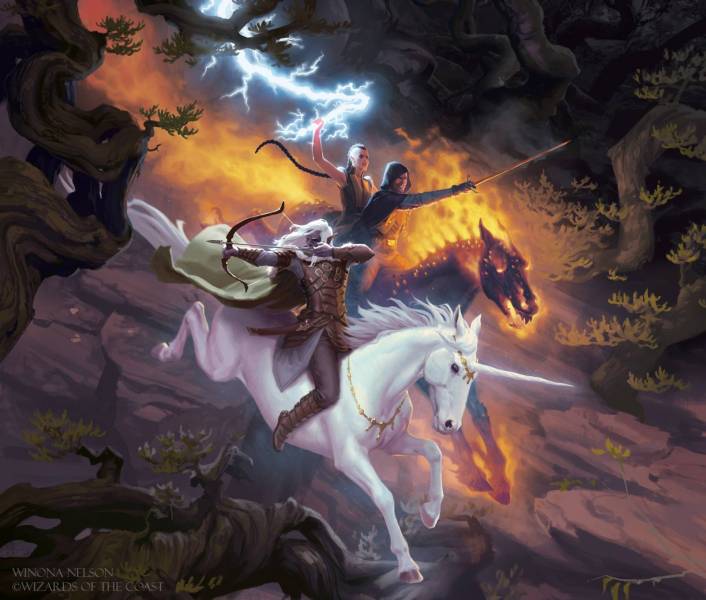
Art by Winona Nelson, for “The Legend of Drizzt: Neverwinter” by R. A. Salvatore, for Wizards of the Coast. Art directed by Kara Kenna. Digital.
8. Go go go!
-
- Work faster than your fear. Start drawing or painting whether you have an adequate chunk of time or not – being interrupted is actually good, because it’s easier to dive in again later on a task half-finished, than it is to start from “a good stopping point.” Begin before your brain can list reasons not to work. Set out your paint even if you’ve only got a few minutes – after all, you bought the stuff hoping to use it up, not to have a collection of full tubes.
- Approach your task side-on, so as not to spook it. You don’t always have to identify what you’re going to do before you make a mark. Sometimes the best ideas come when you are distracted, when you’re trying to solve a different problem, when you’re tired, or when you have only 2 minutes before the next demand on your time. Inspiration finds you working! (Or bathing.)
- Mistakes are nothing to be afraid of. Better to have to start over than to still have a blank canvas. Remember, every failed painting is a win: one less mistake you have to make in the future! Pile those suckers up, they are the ugly hunks of rock and slurry of mud with which you build your foundation.
9. There’s no such thing as “perfect”
-
- The sweet spot is found at the intersection of the needs of the client/prompt, and your most unabashed weird self. The more in touch you are with your own weirdness, the more recognizable and memorable your work will be. It’s not “How do I make this painting perfect?”; it’s “How can I do this piece in a way no one else but me could/would?”
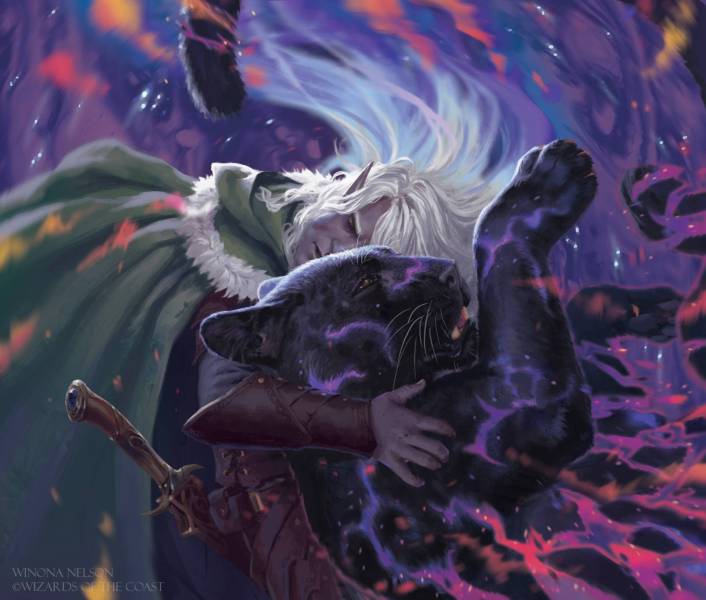
Art by Winona Nelson, for “The Legend of Drizzt: The Last Threshold” by R. A. Salvatore, for Wizards of the Coast. Art directed by Kara Kenna. Digital.
Now, go go go!




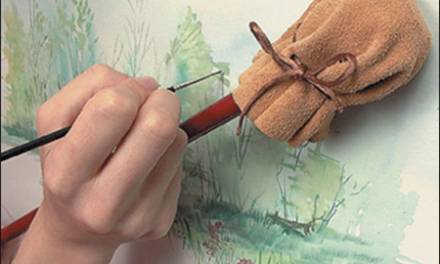

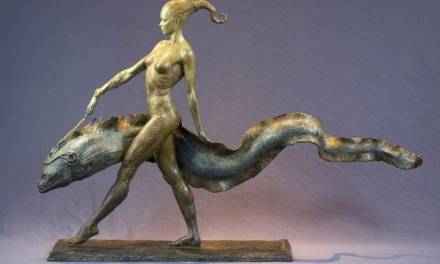
Wow. I knew I was going to be interested in this article, but I didn’t know I was going to walk away from it with so many tools and reframes to incorporate into my practice! Love all of these tips and how easily you laid them out for us.
I’m so happy to hear they’re inspiring you!